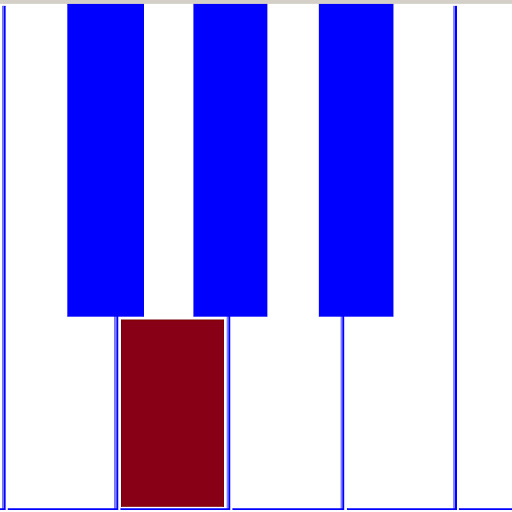

Stephen Stills wrote a song called "49 Bye-Byes", which appears on the self-titled debut album of Crosby, Stills, and Nash.
this YouTube video contains the audio of the studio recording,
But the recording speed is a bit slow, so that is effectively a transposition downwards, by a semi-tone / half-step.
So, the music sounds like it is in the Key of 'B' Major.
The real key (that song is in) is actually 'C' Major. That's easier to play on the piano keyboard.
Country-style fills in right hand. This is difficult for me to figure out, verbatim (what is note-for-note), by-ear.
That is stylistically very similar to his (piano on) "Four Days Gone" (which appeared on the Buffalo Springfield's last album, Last Time Around, from 1968).
Try the following simple chords on the piano, in the following (stated) sequence, as written below :
The chord sequence (progressions/changes) are :
C Major, then :
F Major, then:
B-flat Major, and
back to F-Major
then:
a minor (7?)
But when vocals verse comes in, the sequence of chord changes are slightly different on one point:
C Major, F Major, B-flat Major ,
to C MAJOR -- as opposed to (not) F Major, this time. ("all in a line")
What follows (next line/verse) is the initial sequence that appeared first in the introduction
which is (again): (re-stated) ;
| C to F to B♭ to _F_ then a min.(7) |
Try voicing those chords in the following inversions, to make it easy to switch between chords, more seamlessly:
| C Major | (1st inversion) | E+G + C |
| to | ||
| F Major | (Root position) | F + A + C |
| then: | ||
| B-flat Major | (2nd inversion,
with "/F" in bottom) | F + B♭ + D |
back to F Major (not d minor (7?) ??)
The style (particularly the piano part) (arrangement) is very similar.
Stephen stills recorded this (in early 1968?) for the last (third) Buffalo Springfield album, Last Time Around.
Starts on the chord of 'F' Major.
Low octave 'F' in bass register.
F 7 ( 'F' dominant-7 chord, includes lowered 7th : E-flat )
Right hand plays paralell thirds:
C+E♭
B♭+D
A+C
Then, a higher phrase, which is similar (more thirds):
E♭+G
D+F
C+E♭
Then right hand plays 'G', with
E♭ in left hand.
So, the next chord after
F7
is
E♭ Major.
a D♭ (which is the lowered-7th of E♭)
to:
B♭ Major.
Then:
'd' minor 7 (and maybe 9th on top, too, which is a 'C')
-- try a series of (stacked) triads:
d minor , F Major , and a minor |
That's the piano intro.
The verse(s) start,
Stephen's Vocals come in,
and the chord sequence is the same:
F 7 , E♭ Maj. (E♭7) , B♭ Maj. , d minor. 7 <-- : ||
(and repeat)
THEN:
"driving four days, and nights, sir"
E♭ Major (7?) (D-natural, at top)
to
'd' minor 7 (9??)
The E♭-Major 7
can have a 9th added to it ( E♭ + G + B♭ + D + F )
Then:
'g' minor 7
to
C7 ( C + E + G + B♭ )
The
g-minor 7
can have a 9th added to it ( G + B♭ + D + F + A )
"Carry On" Box Set, 1968 C2-4GJQqDvk -- listen to the end, in which he stacked 3rds/triads/7th-chords , in ascending manner -- like "Rock 'n Roll Woman", sorta? (modal chords/harmony)
Take those two last chords (pair of chords) :
E♭ Major (7?) (D-natural, at top) to 'd' minor 7 (9??)The E♭-Major 7 can have a 9th added to it ( E♭ + G + B♭ + D + F )Add a 3rd chord to that: c minor 9 (or 11th) So the three chords can go: E♭ Maj. (7 / 9 / 11 ) d min. (7 / 9 / 11 ) and c min. (7 / 9 / 11 ) As mere 7th chords, can be thought of in terms of a combination of two triads, together, at-a-time : E♭ Maj. (7) + 'g' min. triad d min. (7) + F Maj. triad c min. (7) + E♭ Maj. triad those 9th chords, can be thought of in terms of : E♭ Maj. 9 + B♭ Maj. triad d min. 9 + a min. triad c min. 9 + g min. triad eleventh chords can be thought of as : E♭ Maj. 11 + d min. triad d min. 11 + C Maj. triad c min. 11 + B♭ Maj. triad
back to Free Instructional Materials
| back to homepage |